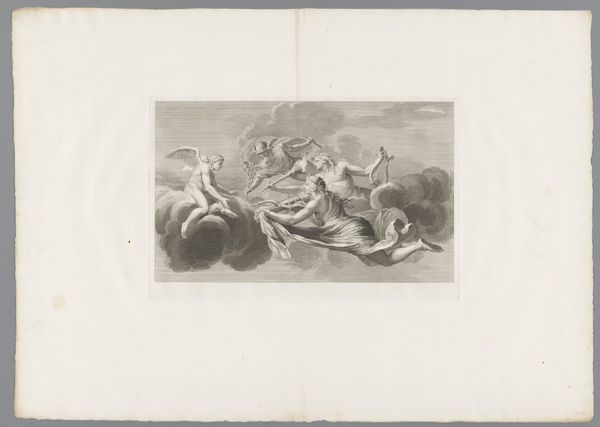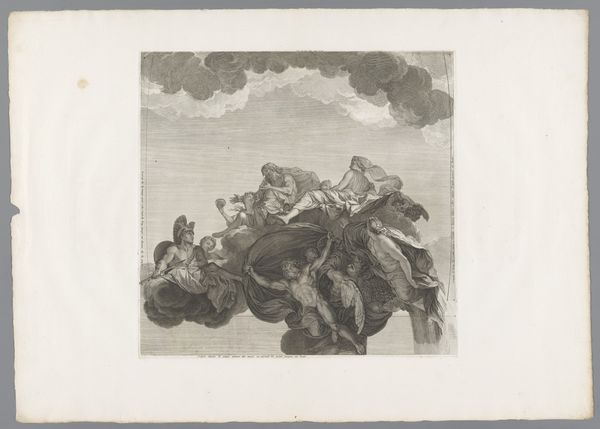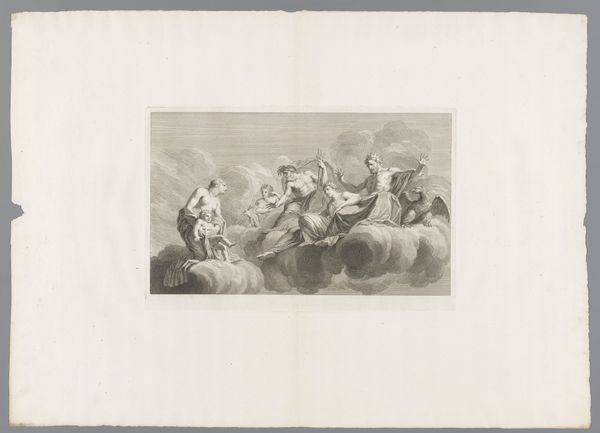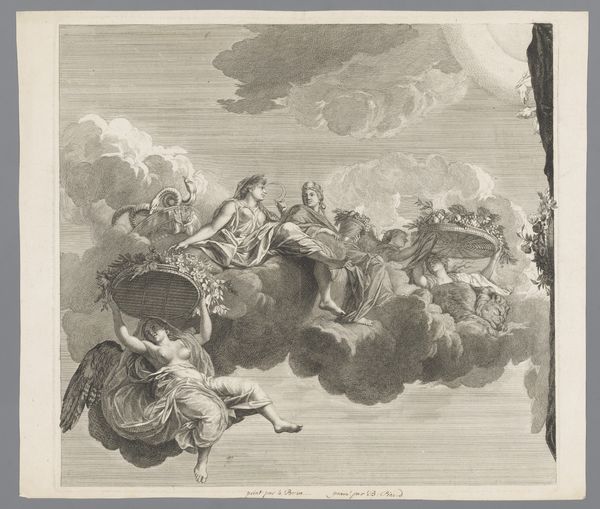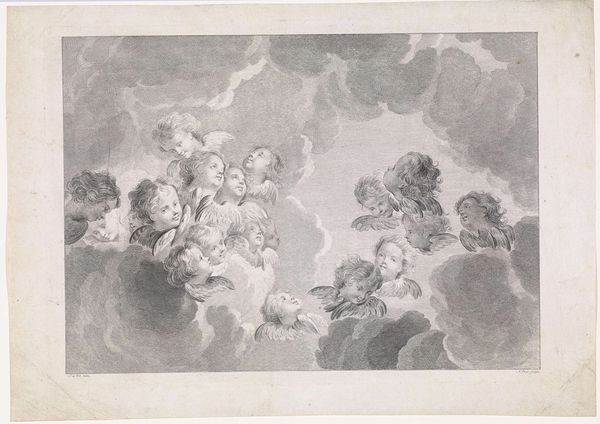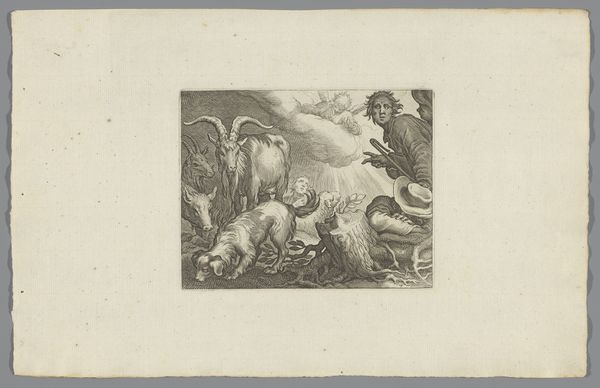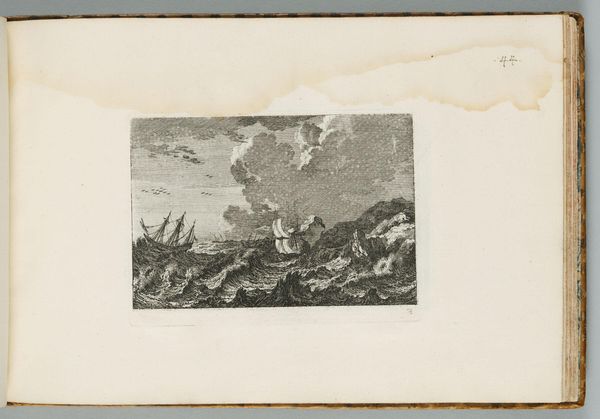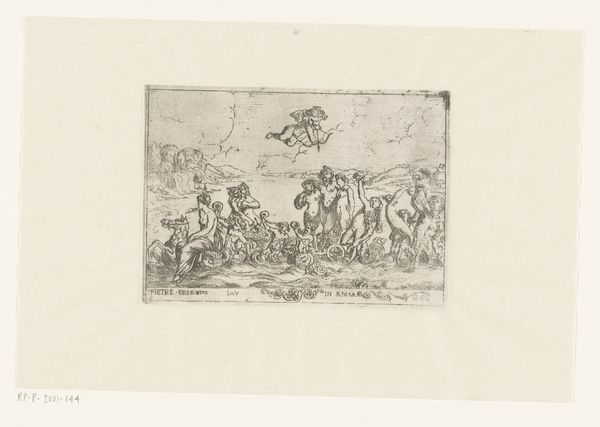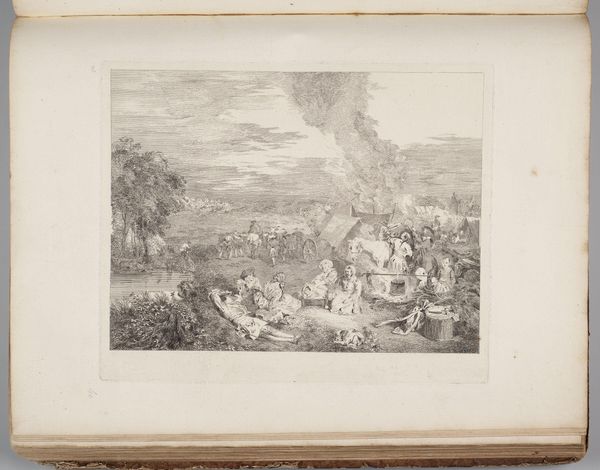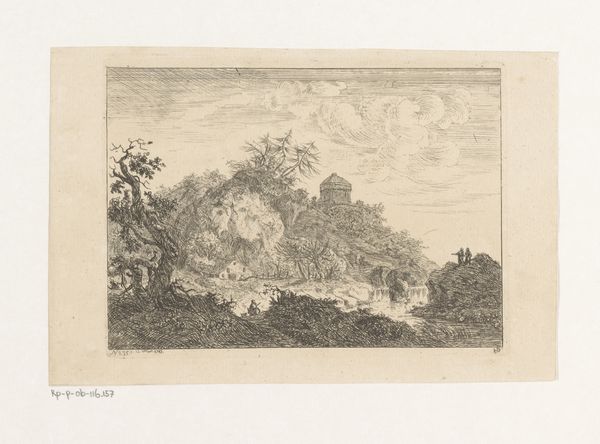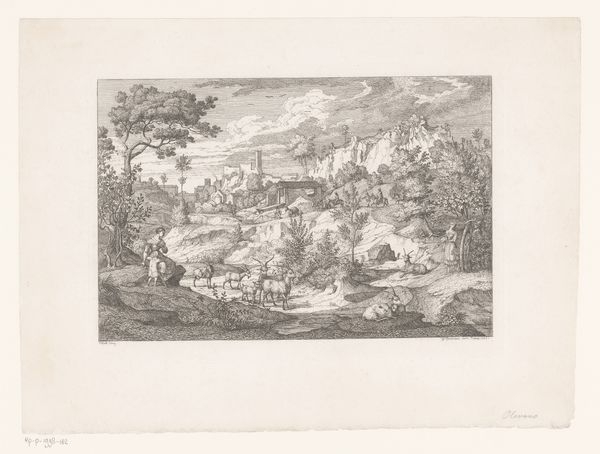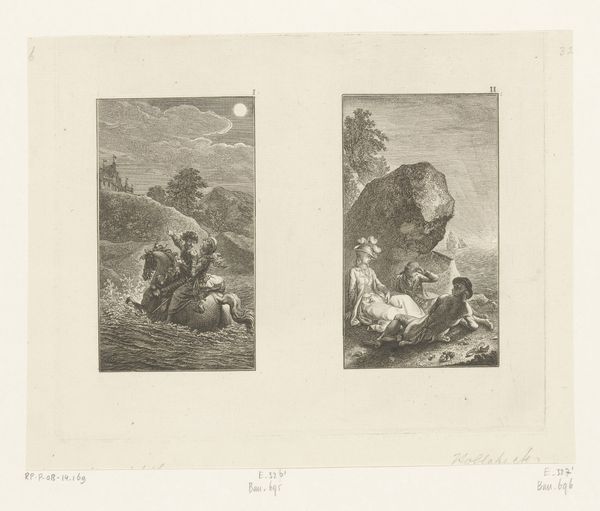
print, engraving
#
allegory
#
baroque
# print
#
landscape
#
figuration
#
engraving
Dimensions: height 380 mm, width 406 mm
Copyright: Rijks Museum: Open Domain
Curator: Ah, this engraving, "Ceres, Cybele en de volgelingen van Flora op de wolken," was crafted by Bernard Picart between 1713 and 1719. I find the allegorical themes and figures intriguing. Editor: It’s ethereal. Almost dreamlike, the way the figures seem to float amongst the clouds. There's a lightness that belies, I imagine, some heavier symbolism. Curator: Precisely. Consider Ceres, the goddess of agriculture, alongside Cybele, the Anatolian mother goddess associated with fertility, nature, and wild animals. Then there are Flora’s followers, weaving their revelry among the clouds. The baroque style lends itself perfectly to the drama and grandeur of such a celestial gathering. Editor: And where does that snake, right above Ceres, fit into all of this? It definitely shifts the image's dynamics, even complicates it slightly. I mean, snakes carry so much cultural baggage, don't they? Deception, transformation, but also healing and medicine... It gives a very Edenic tone. Curator: An astute observation! The serpent is indeed a potent symbol with layers of interpretation. In classical imagery, it can represent wisdom, immortality, but also chaos and the chthonic forces of nature. Its proximity to Ceres, a symbol of abundance and order, creates a tension that reflects the constant negotiation between the wild and cultivated, nature and civilization. It definitely disrupts the expected harmony, which is actually what I appreciate most about it. Editor: Disrupting expected harmony… I can definitely see how Picart uses that dissonance to highlight the social order of the time. Consider how those “chthonic forces” and associations with deception would likely have been mapped onto marginalized groups – women, perhaps, or those accused of witchcraft. By weaving this into the scene, he subtly engages with the politics of representation and societal control. Or, maybe not? Is there evidence that would counter this reading of your disruption of harmony? Curator: That's certainly a viable lens through which to view it. I see how you draw that link to social power structures. Perhaps the engraving subtly reveals the anxieties inherent in attempts to control nature and fertility – anxieties projected onto those who were perceived as untamed or dangerous. I hadn’t considered that before. Editor: These historical imprints really bring such a depth and complexity to our reading. Curator: Indeed. It’s fascinating to see how even in something seemingly straightforward, cultural history keeps informing art production and visual grammar. Editor: Yes, and how relevant such old imprints still feel when seen from today's society.
Comments
No comments
Be the first to comment and join the conversation on the ultimate creative platform.
